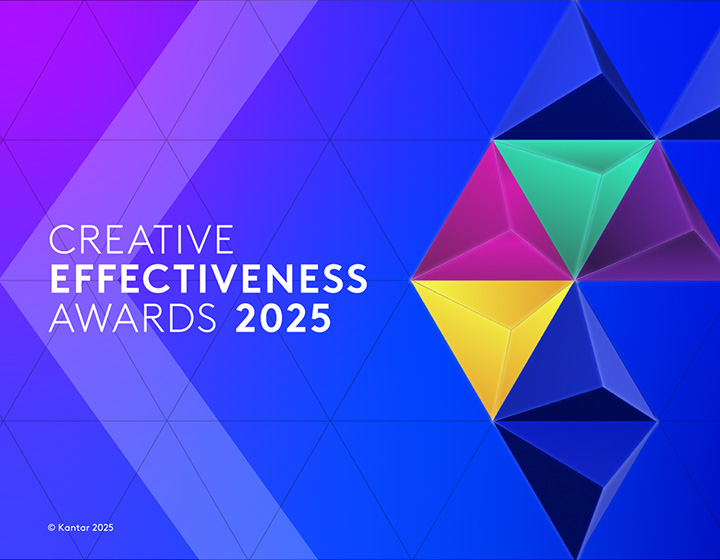Just over a year ago, we talked about the steady overall decline of humour in advertising over the last two decades. The good news is that Kantar data from 2022 saw a slight return in the use of humour, which remains steady so far in 2023. We also note that humour has been a consistent theme of our Kantar Creative Effectiveness Awards winners, which are judged by consumers, but it was also a big topic this year at Cannes Lions, where experts are the judges. In previous years Lions were more often awarded to serious heart-felt advertising than funny ads.
This year, one of the Grand Prix awards in Film went to Apple’s R.I.P. Leon: an ad that cleverly used humour to amplify the ad’s key message, the new ‘unsend message’ feature. As Affectiva’s Emotion AI data shows, audiences found the ad highly engaging, with the twist of Leon returning from the dead working really well to clarify the ad’s key message. Viewers showed clear indications of tension (brow furrow) as they witnessed his fate, with a strong transition into smiles as he came back to life – a clear product demo.
The emotional response to Apple's ad: 'R.I.P. Leon'
 The case for humour was further backed up at Cannes by Andrew Robertson, CEO of ad agency BBDO, who gave a powerful presentation incorporating Kantar’s LINK+ data to demonstrate that humour can deliver impact for brands if it’s done well. Robertson called on the industry to use more humour, and challenged Cannes Lions to open a whole new category of awards focusing solely on the use of humour in advertising.
The case for humour was further backed up at Cannes by Andrew Robertson, CEO of ad agency BBDO, who gave a powerful presentation incorporating Kantar’s LINK+ data to demonstrate that humour can deliver impact for brands if it’s done well. Robertson called on the industry to use more humour, and challenged Cannes Lions to open a whole new category of awards focusing solely on the use of humour in advertising.
The use of humour in advertising is back

With the slight increase in humour remaining steady across TV and Print/Outdoor advertising, we also looked at the use of humour across digital ads. The last five years of digital data shows a steady decline in the use of humour. Why is this? Firstly, digital ads are still unfortunately under-researched. Secondly, digital also still tends to be used for activation, where short-term sales increases are commonly the objective . We contend that the powerful brand building tool of humour has slowly been getting overlooked by digital advertisers. This is a real shame, because ads that the brand intended to be funny show similar increases in engagement and distinctiveness across all media channels.
Where, and how much, is humour used?
32% of all ads contain some form of humour. Splitting this out by media channel, we see that over half of radio ads are humorous and there is above average use in TV ads. Print and outdoor ads make much less use of this powerful tool. Digital ads use humour slightly less than average, with variance seen across the different digital platforms. X (previously known as Twitter) and YouTube ads are more likely to make you smile than those seen on websites.
Slight differences are also seen by region. European ads contain the most humour, ads from Asia Pacific the least. Category variations show that establishments, retail and other services, (finance, travel etc.) along with food and drink ads are more likely to get you laughing than public information ads (for example health, charities, education).
% of ads containing humour

There are absolutely no barriers to the use of humour in ads, regardless of media channel, region or category. Done well, and appropriately, humour is fair game in advertising regardless of who is watching, where, and for what. In fact, it can be a very useful tool in broaching the most sensitive of subjects and can help to convey a message that might otherwise be difficult, as in this winning Kantar Creative Effectiveness Awards 2023 ad for Milgamma Protekt Vitamins. This is a clever example of how humour was used to convey a very serious message about numbness being a possible sign of nerve damage, due to vitamin deficiency. The fun painting of the feet that grandad hasn’t noticed helps to amplify the product’s core message with a touch of humour but, in a sensitive way.
Kantar Creative Effectiveness Awards 2023 ad Milgamma Protekt Vitamins

You thought it was funny, but did they?
So how funny is your ad? New Kantar data lets us look more closely at the differences between ads that were intended to be funny, versus those that really did make consumers laugh out loud. The Kantar Creative Effectiveness Awards have consistently awarded ‘funny’ ads every year and with consumers as the judge, it’s important that your humour really lands with them. The fact that they have been selecting funny ads as our winners since the awards began in 2019, whereas experts across other awards were not, is clear evidence of the disparity between what people want, and what we think they want.
Kantar LINK+ data shows that ads marketers intend to be funny have above average distinctiveness, emotional connection and engagement, but are not as strong as the ads that made consumers truly laugh out loud. Ads that really landed their humour well are not only distinctive, emotionally connected and engaging, they are also more persuasive and well branded. On top of this they are clearly helping to build brand equity by differentiating themselves and making their brand feel more meaningful to consumers. These LOL ads genuinely have it all.
Intention is not enough to make consumers 'laugh out loud'

How can you ensure your humour works?
Knowing the benefits of really landing your humour is one thing, doing it is another. In my previous article Who's laughing now? I discussed the ideas of using professional comic writers, popular content creators, user-generated content, basically anyone who can help you really connect your humour in the right way, and I would still advocate their use. However, with Kantar’s ad testing solution LINK+ it is now faster, easier and cheaper to test out early-stage ideas to select your winners or do a quick last-minute check before the campaign goes live, to ensure that your humour will have those you want to connect with laughing out loud.
Click here to find out more about how LINK+ can elevate your ad testing and request a demo.






